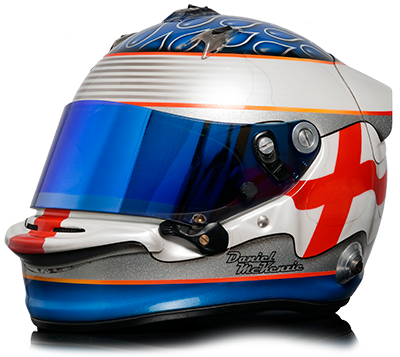The 2017-18 Formula One campaign is under way, with the Australian and Chinese Grands Prix serving notice that Mercedes’ recent domination of the sport might be under threat from Ferrari.
But while much of the attention was on Sebastian Vettel’s contests with Lewis Hamilton, and on what F1 would look like in a post-Ecclestone world, for many the technical battle was just as interesting.
Daniel McKenzie watched events from Melbourne and Shanghai not just as a racer and coach, but also as the owner of CarbonWurks – designers and manufacturers of road-legal aero parts for car owners.
Here he gives his verdict on changes that have seen this year’s Formula One cars prove themselves faster and more challenging to drive – with aerodynamics and bodywork among the key changes.
He said: “The whole stance of the car is much lower and wider, and they have tried to get more performance out of them by gripping them up.
“This extra grip means they have effectively shortened the braking zones – drivers can brake later and carry more speed through the corner, making it harder to pass. You have to have some serious guts to sling it down the outside when you’re going so fast.”
He’s impressed by Ferrari’s early grasp of the regulations but cautions it’s too early to assume they’ll dominate.
“Obviously, Ferrari have progressed massively and this is where you see some of the funky bodywork come into play. Ferrari have hit the nail on the head while others have had teething trouble.
“The first race can be a bit of a lottery and not necessarily representative of what will happen. It reminds me of the Brawn era – they got on top of the aerodynamic package first and were doing interesting things. And we’re in a similar position now – the teams at the top now have a head start, but they aren’t who will necessarily stay at the top.”
What interests him in his dual roles as a driver who is also a manufacturer of bodywork is that Ferrari’s Formula One design seems to be converging with its road cars.
“At the moment teams are unsure what the ideal design is, and there are two areas that are interesting. Firstly, the bargeboards, where all the different teams are trying different things to catch dirty air from the wheels.
“What Ferrari are doing echoes what’s on their road car and the concepts they’re developing for future models. It’s getting to the point where what’s happening on the road cars is intertwining and we can see integration between the two aero packages.
“Road cars are using more of these parts. They remain road legal, but are more similar to F1 and LMP cars than they have ever been and you’re probably going to see more of this in the future.”
The second major change is the shark wing on the rear spoiler – another area with relevance to high-performance road cars.
He said: “On the new cars the wings are lower and wider, and the regulations have changed to allow that void to be filled. Teams are trying to channel the air so it’s not wasted – Mercedes have what is almost a second rear spoiler while other teams are using a shark wing almost like an LMP car.
“Similarly, our aim at CarbonWurks is to build parts that don’t just look good but also give you more grip and downforce. Even on a road car, a rear diffuser helps with air flow and holds the rear steadier through high speed corners – it’s exactly the same principle as F1 and GT cars where you can affect the handling through diffusers.”

